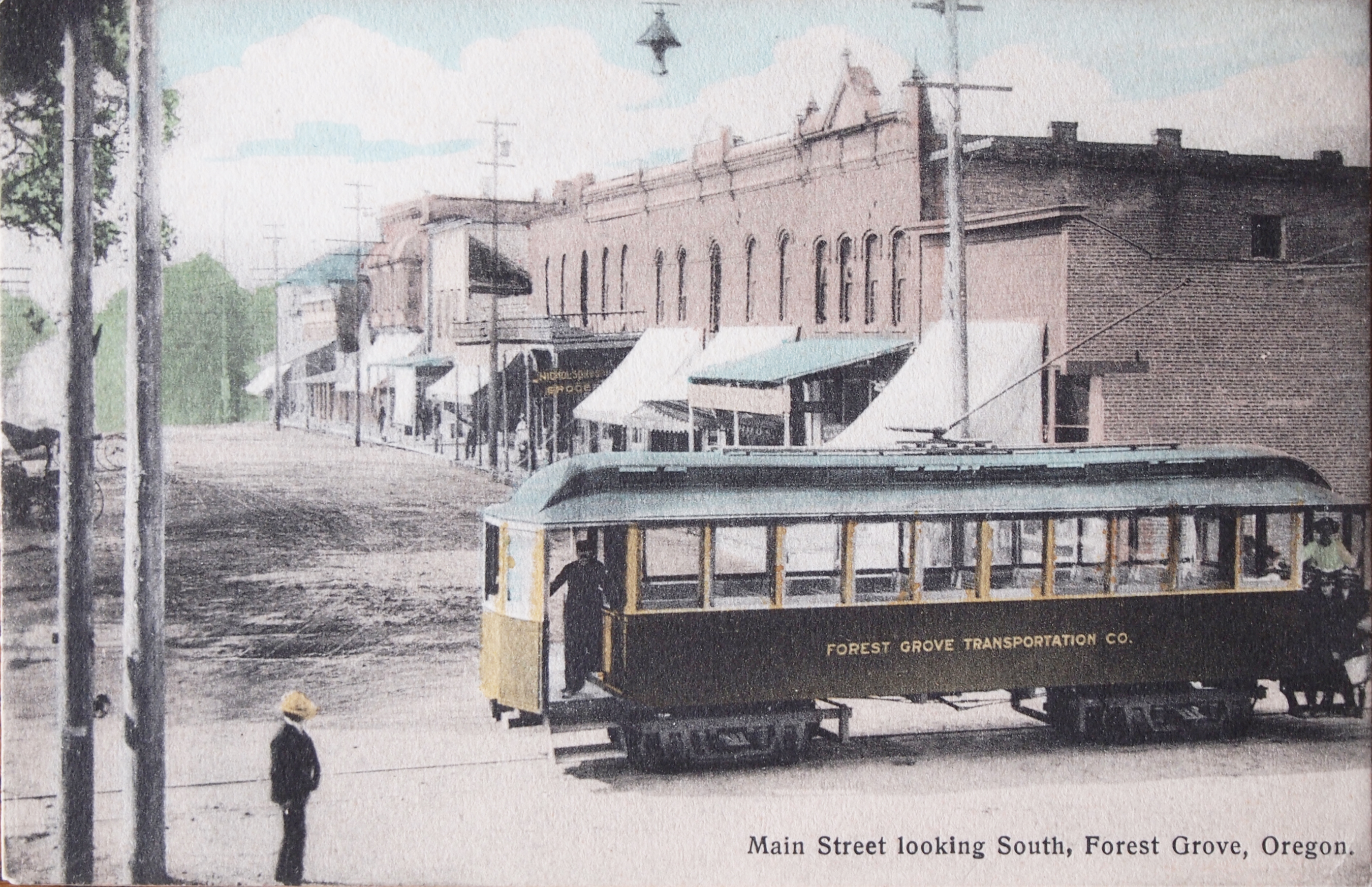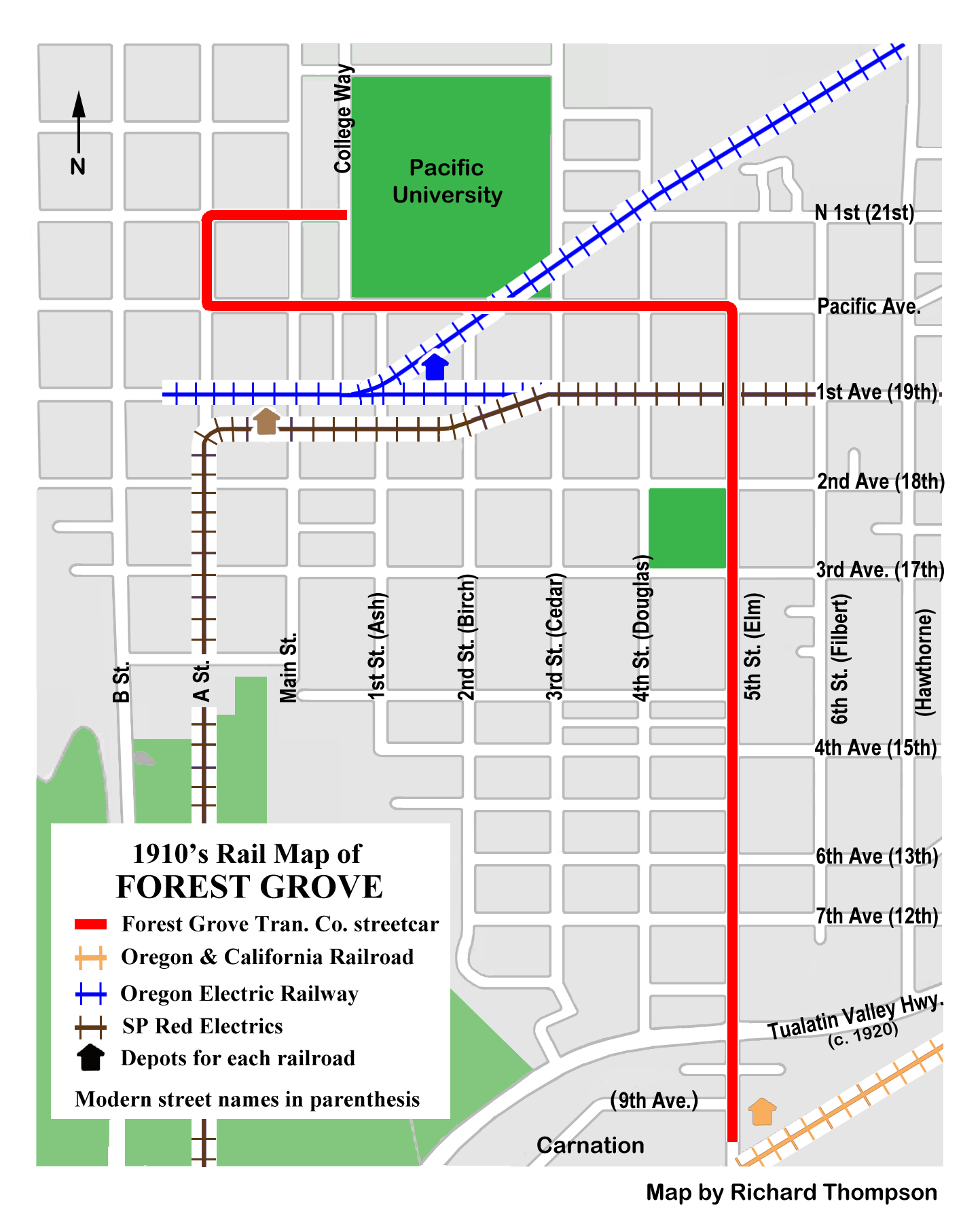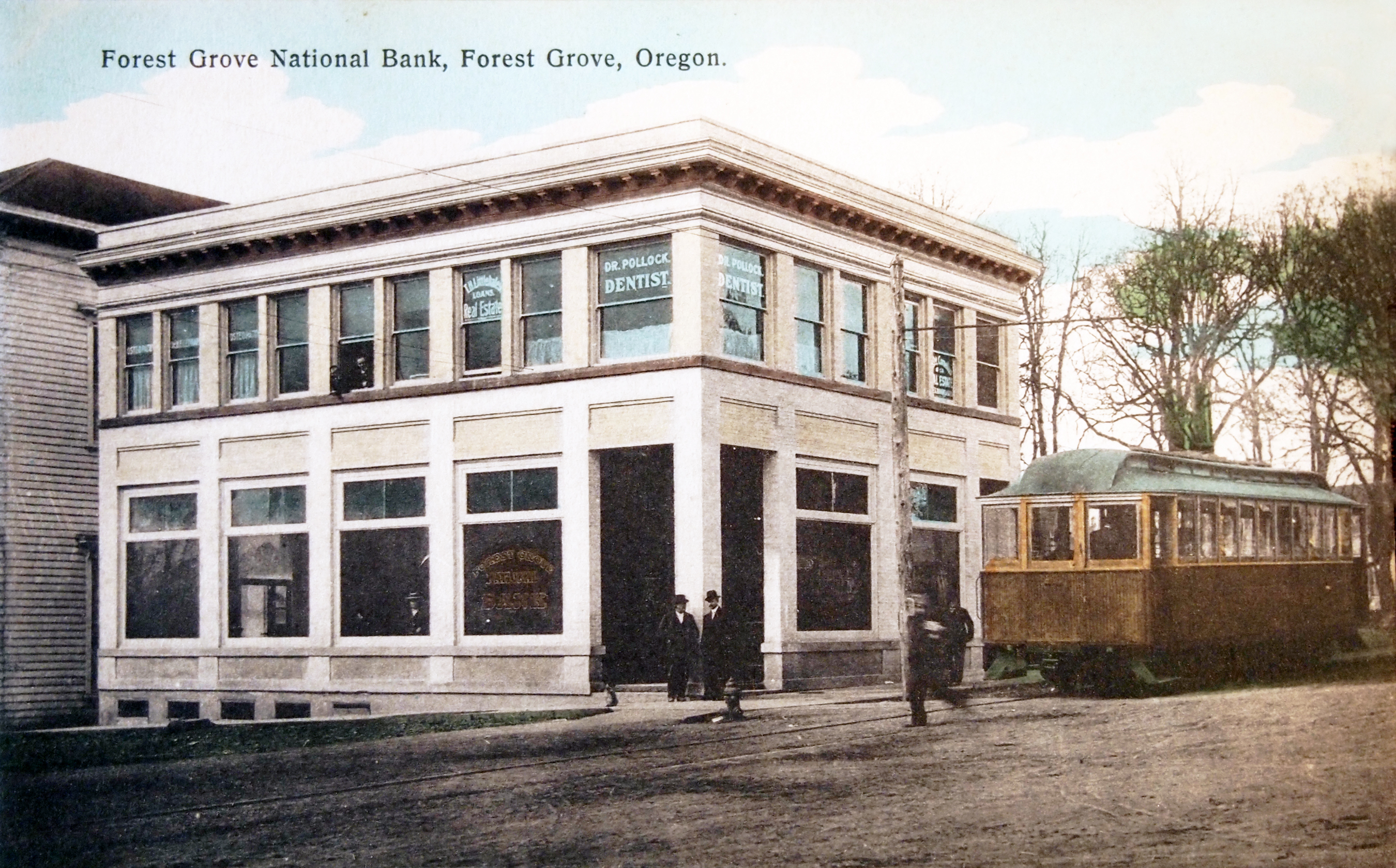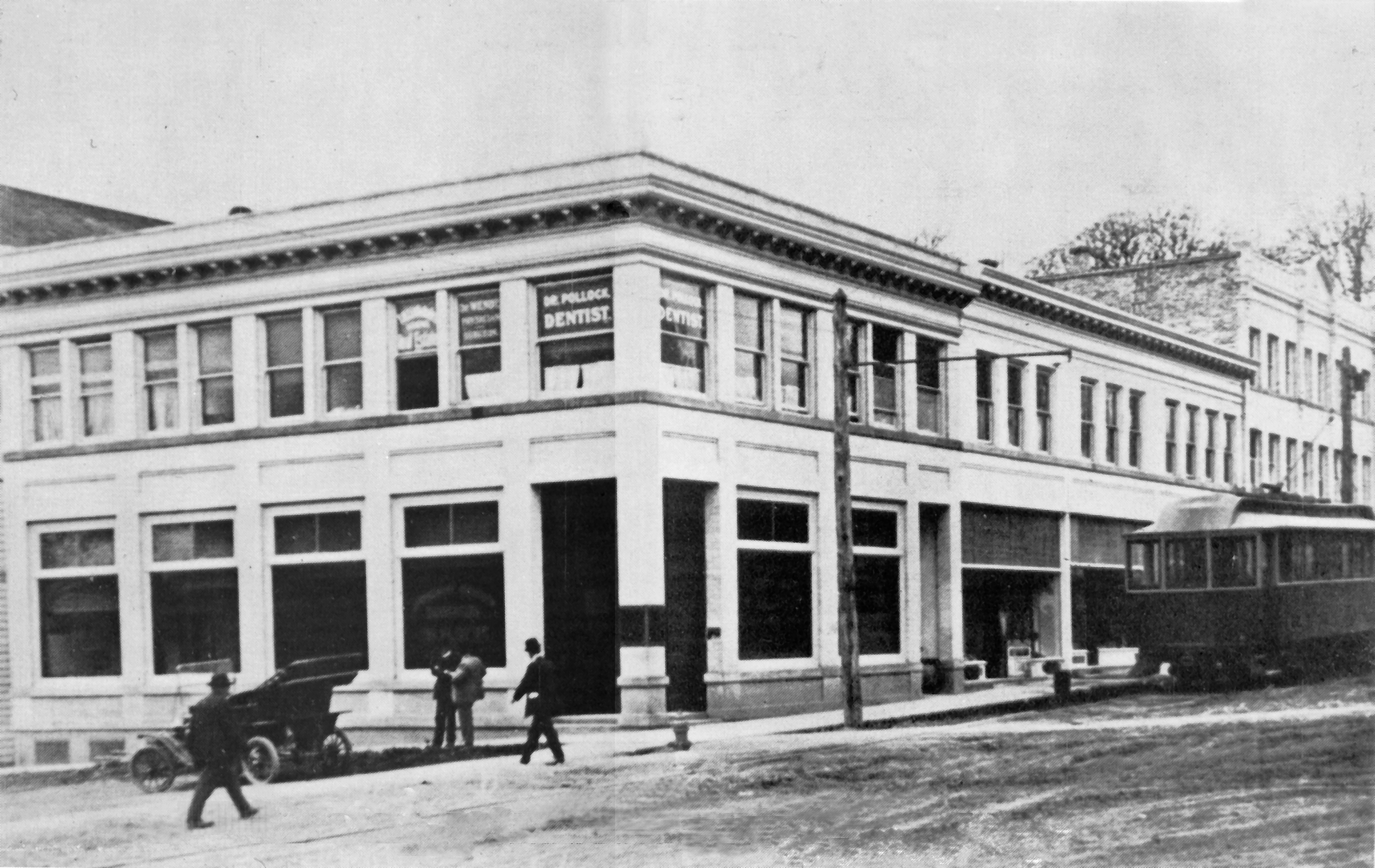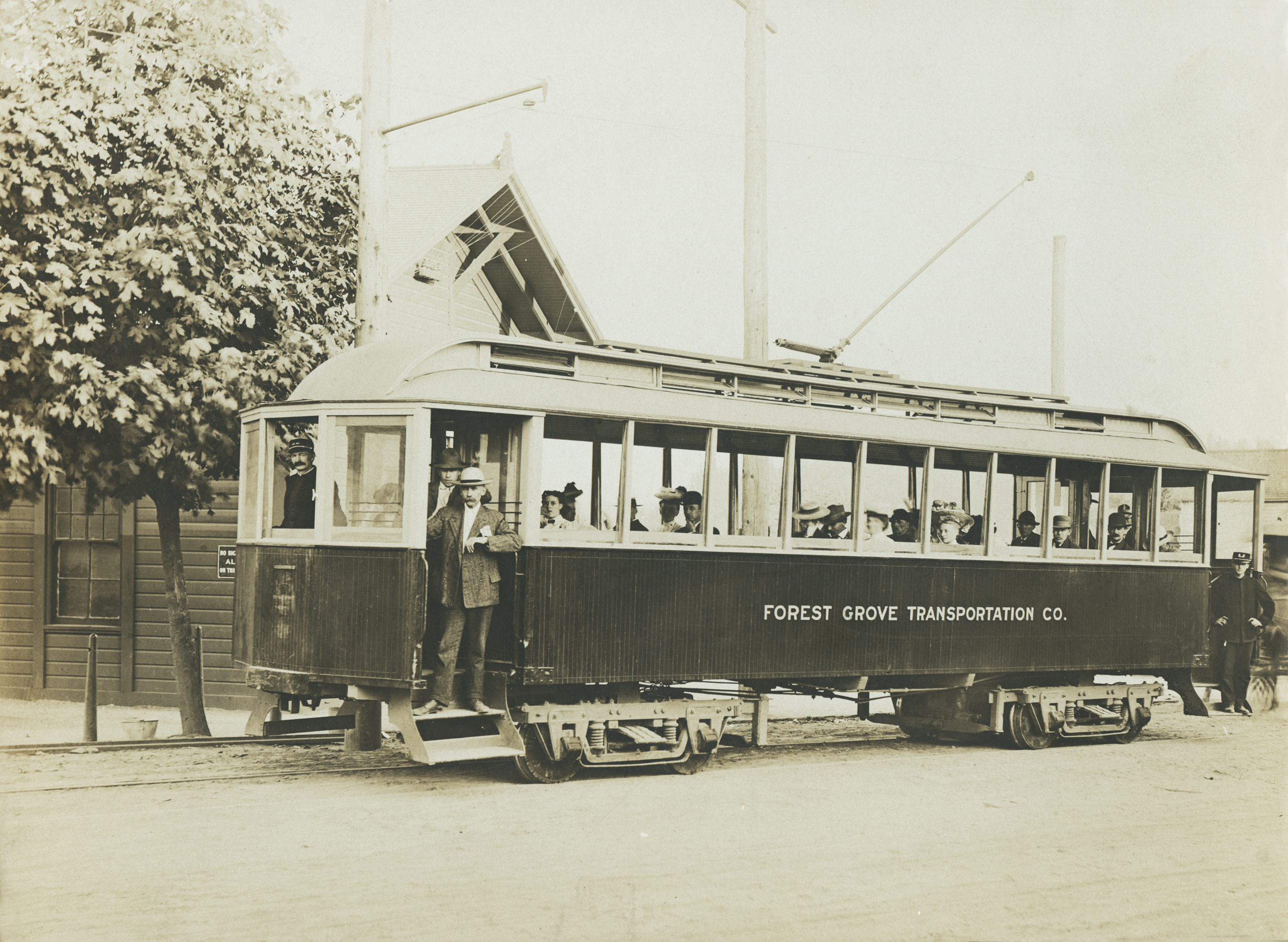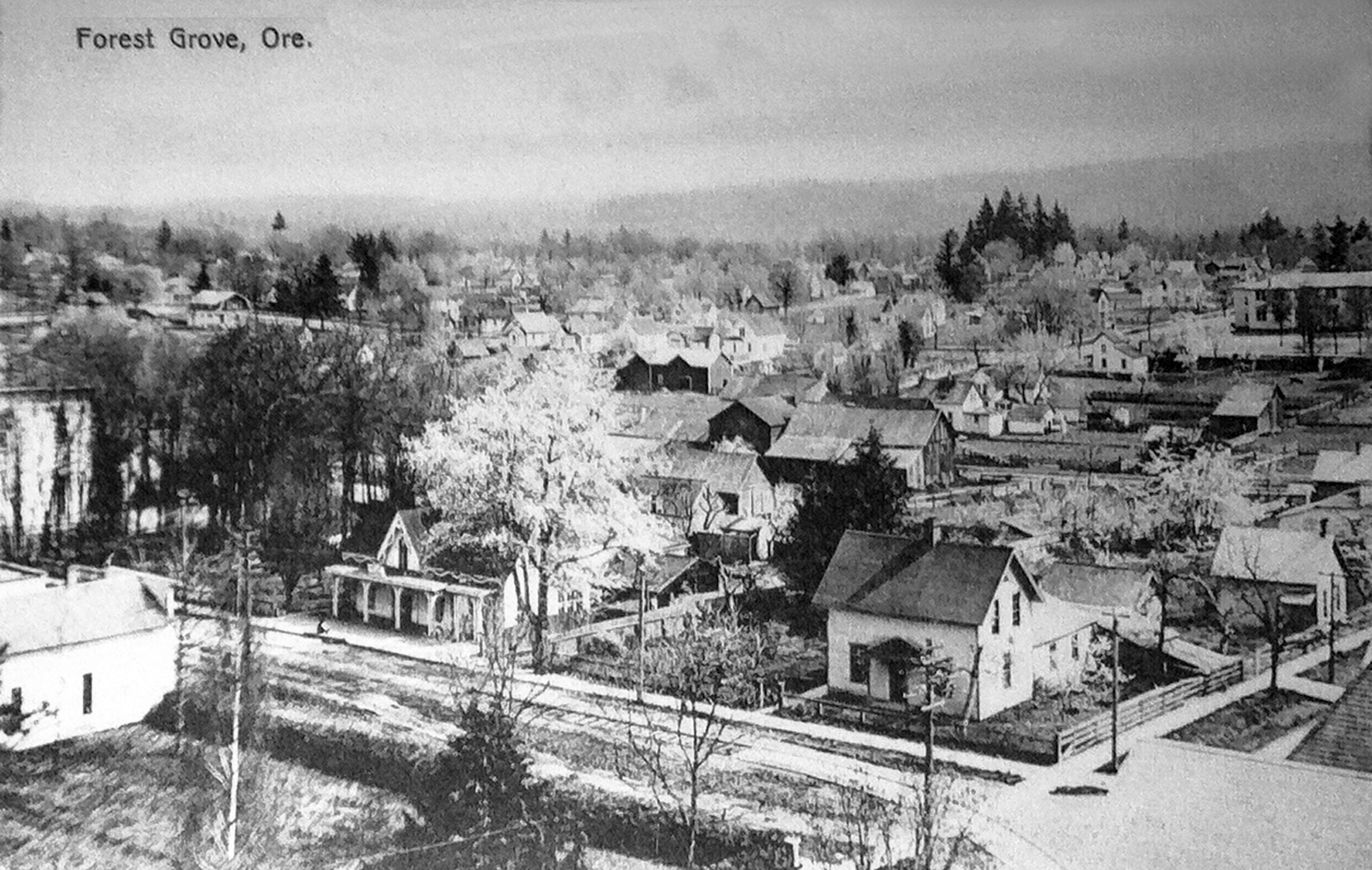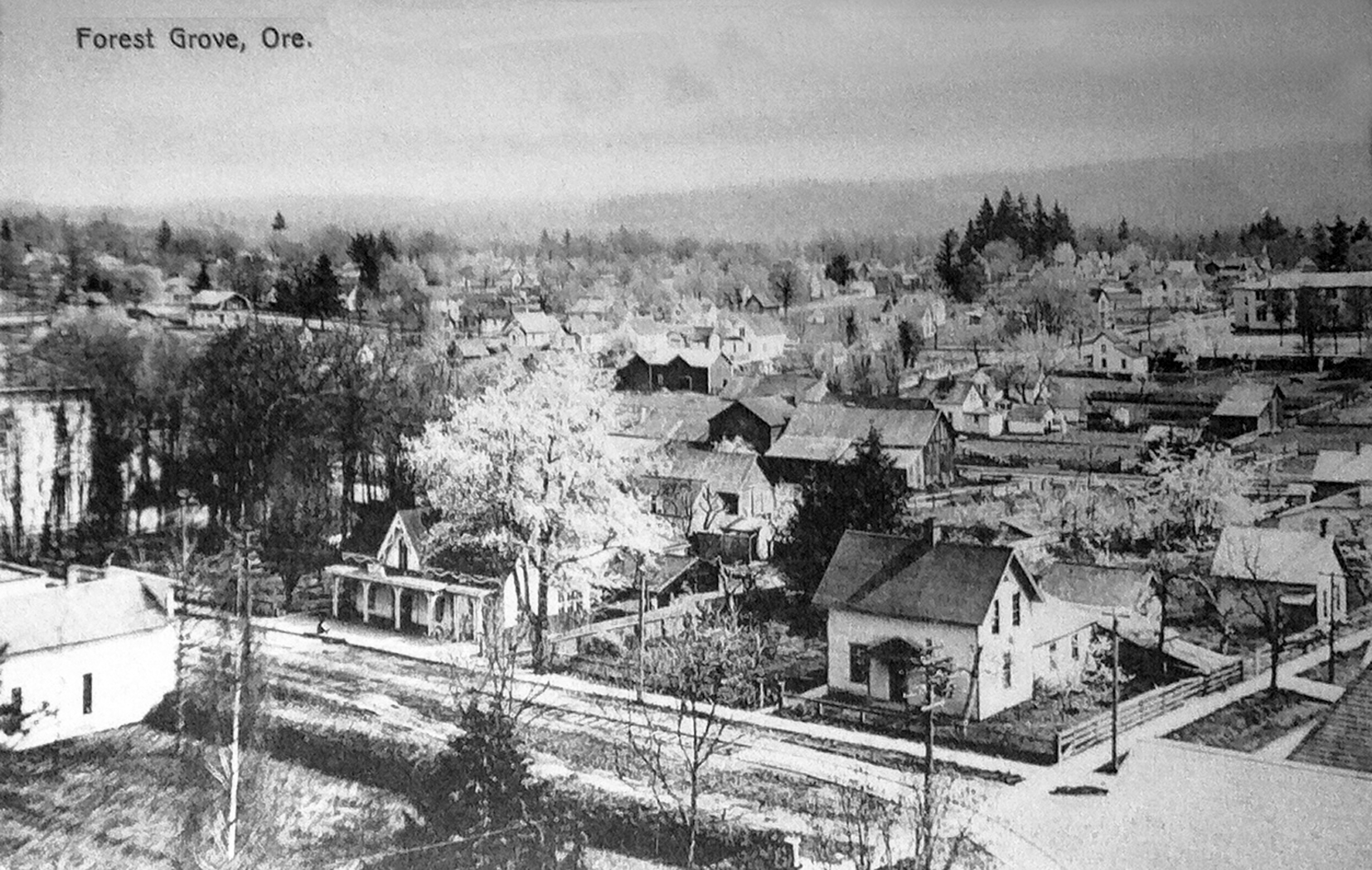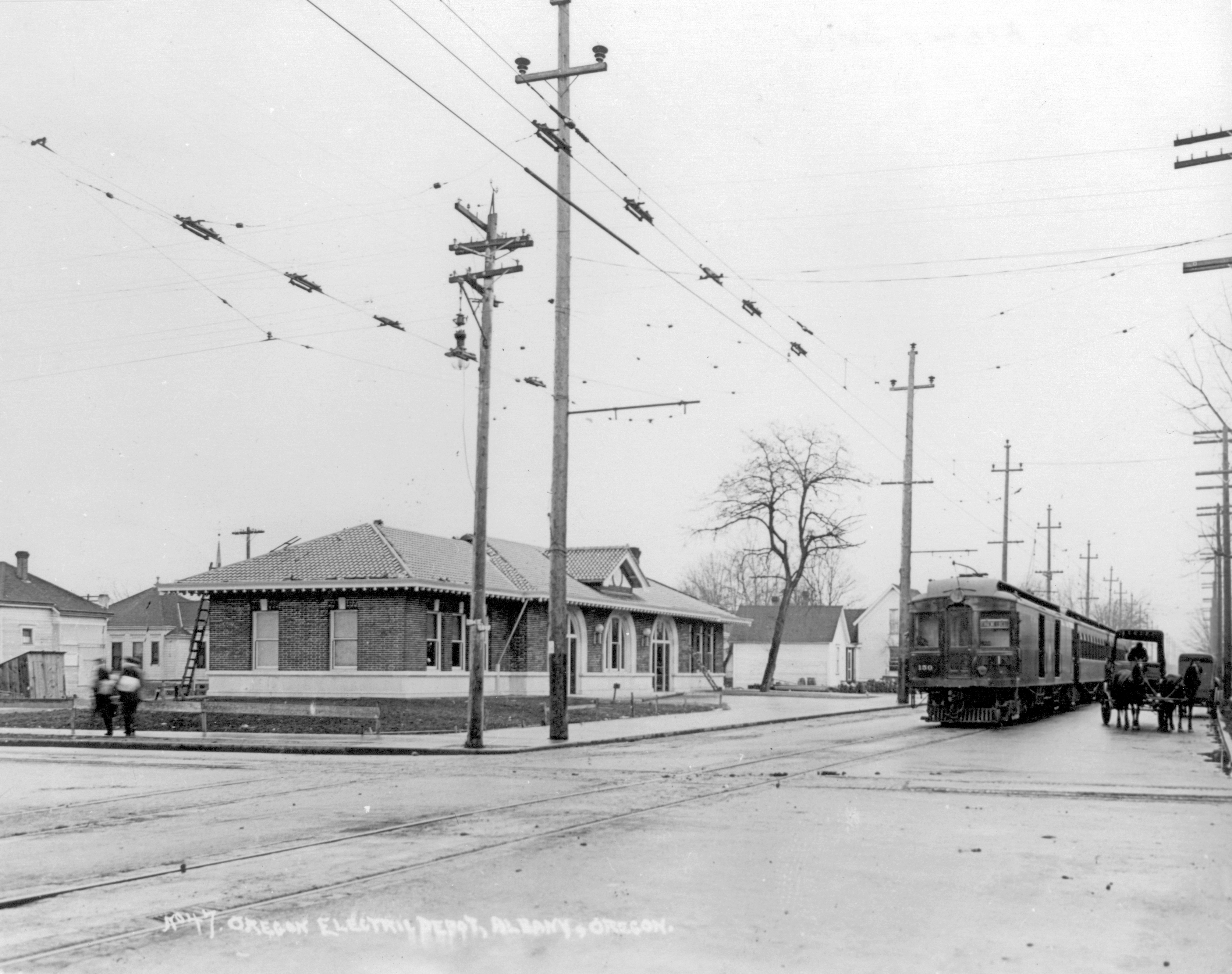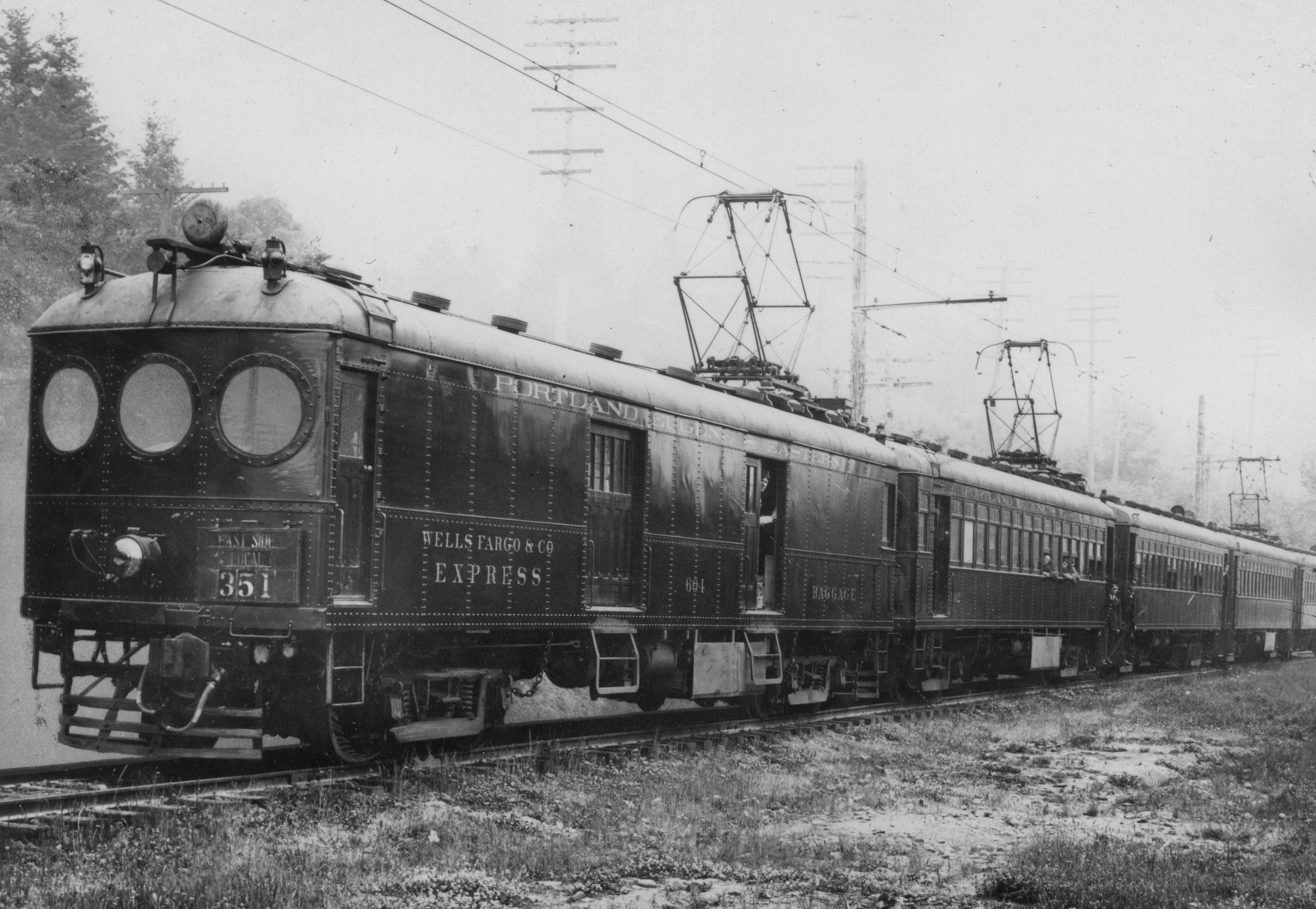In 1906, E. W. Haines, an Oregon state senator and banker, led the Forest Grove Transportation Company’s efforts to construct a streetcar line between downtown Forest Grove and the train station, located a mile south of town. An 1872 land donation had prompted the Oregon & California Railroad to build its depot at a location that remained inconvenient to Forest Grove residents for the next thirty-three years.
In May 1906, a new 1.7-mile trolley route provided an efficient solution. Power was supplied by the Haines Electric Power Company, of which Senator Haines was part owner. A 1907 railway directory lists five pieces of FGTC rolling stock, which would have included two streetcars and three freight cars. One of the trolleys was a partially open car that likely proved unsuitable, since passenger service was soon provided by a single streetcar. This repurposed interurban is thought to have been an unpowered coach built for the City & West Portland Park Motor Company, which operated a five-mile steam dummy line in South Portland.
The northern terminus of the Forest Grove Transportation Company was on what is now 21st Avenue and College Way in front of Pacific University. The southern terminal was on South Elm Street, adjacent to the Oregon & California station. The area was called Carnation after the plant that had produced condensed milk there from 1902 to 1929.
The streetcar linking the Carnation depot with downtown became less tenable with the arrival of two new railroads. In 1908, the Oregon Electric Railway came to Forest Grove, and four years later the Southern Pacific Railroad (which acquired the Oregon & California Railroad in 1887) began construction of the Red Electric system. Franchise agreements saw to it that both built downtown depots. The Forest Grove Transportation Company went out of business in 1911.
-
![Forest Grove Transportation Company streetcar crossing Main St. on 21st Ave., Forest Grove, about 1907.]()
Forest Grove streetcars, crossing Main St, color, 1907.
Forest Grove Transportation Company streetcar crossing Main St. on 21st Ave., Forest Grove, about 1907. Courtesy Mary Jo Morelli, Friends of Historic Forest Grove
-
![Map of Forest Grove streetcar system, about 1910.]()
Forest Grove streetcars, map, 1910s.
Map of Forest Grove streetcar system, about 1910. Created by and courtesy of Richard Thompson
-
![Forest Grove Transportation Company streetcar eastbound on Pacific Ave. crossing Main St., Forest Grove, 1908.]()
Forest Grove streetcars, on Pacific Ave, 1908.
Forest Grove Transportation Company streetcar eastbound on Pacific Ave. crossing Main St., Forest Grove, 1908. Courtesy Mary Jo Morelli, Friends of Historic Forest Grove
-
![Forest Grove Transportation Company streetcar in front of Forest Grove National Bank on Pacific Ave. at Main St., 1911.]()
Forest Grove streetcars, on Pacific Ave, 1911.
Forest Grove Transportation Company streetcar in front of Forest Grove National Bank on Pacific Ave. at Main St., 1911. Courtesy Mary Jo Morelli, Friends of Historic Forest Grove
-
![Forest Grove Transportation Company streetcar at Carnation depot south of Forest Grove, about 1910.]()
Forest Grove streetcars, FGTC streetcar in front of Carnation depot, ca 1910.
Forest Grove Transportation Company streetcar at Carnation depot south of Forest Grove, about 1910. Courtesy Washington County Museum
-
![Streetcar tracks on Pacific Ave., 1911.]()
Forest Grove streetcars, Pacific Ave tracks, 1911.
Streetcar tracks on Pacific Ave., 1911. Courtesy Washington County Museum
Related Entries
-
![Forest Grove]()
Forest Grove
Forest Grove is a city of approximately 26,225 residents located in the…
-
![Oregon Electric Railway]()
Oregon Electric Railway
Talk of building a long-distance electric interurban railway south from…
-
![Southern Pacific Red Electric Lines]()
Southern Pacific Red Electric Lines
Oregon gained a distinction in 1912 when the Southern Pacific Railroad …
Map This on the Oregon History WayFinder
The Oregon History Wayfinder is an interactive map that identifies significant places, people, and events in Oregon history.
Further Reading
Amato, Lisa and Mary Jo Morelli. Images of America: Forest Grove. Charleston, SC: Arcadia Publishing, 2010.
Thompson, Richard. Lost Oregon Streetcars. Charleston, SC: History Press, 2017.

